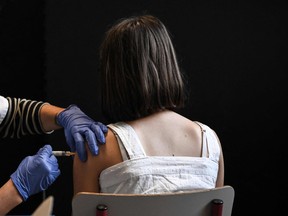A landmark study yields zero cases in women who got the HPV vaccine at a young age. But obstacles remain, including misinformation.

Since the vast majority of cervical cancer cases are caused by infection with the human papillomavirus (HPV), a vaccine that prevents infection can therefore prevent the development of cancer.
What’s more, the vaccine has gone through a few updates over the years. The initial bivalent vaccine protected against HPV-16 and HPV-18, the two types of HPV most usually associated with cervical cancer. New formulations expanded the protection to four and then nine types of HPV. But the first cohort of women and girls to receive the HPV got the original bivalent vaccine and now, 15 years after the fact, we are starting to see the benefits.
The age of vaccination is important. Since HPV is transmitted sexually, vaccination prior to the onset of sexual activity is key. You can still benefit if you are vaccinated later, and vaccination in 14- to 22-year-olds reduced the incidence of cervical cancer in Scotland from 8.4 to 3.2 cases per 100,000.
But even with the original bivalent vaccine, which was in use when these women were vaccinated as girls, the benefits are striking and make talk about cervical cancer eradication possible.
We may never achieve absolutely zero cases as the vaccines do not protect against all types of HPV — only those that are most associated with cancer. But if we can meet the World Health Organization goal of 90 per cent vaccination coverage in girls by age 15, we can probably achieve the target of fewer than four cases per 100,000 per year.
This obviously has to be coupled with proper cancer screening and treatment. In the developed world this is easy, but in many countries limited resources make this difficult. Achieving vaccination, screening and treatment targets of 90 per cent, 70 per cent and 90 per cent, respectively, by 2030 is the new global target. Whether we will achieve this or not will depend on our ability to mobilize resources globally, not just locally.
HPV vaccination has the potential to prevent cancer, not just catch it early. It will take money and resources to meet the WHO targets by 2030. But as they say, an ounce of prevention is worth a pound of cure.